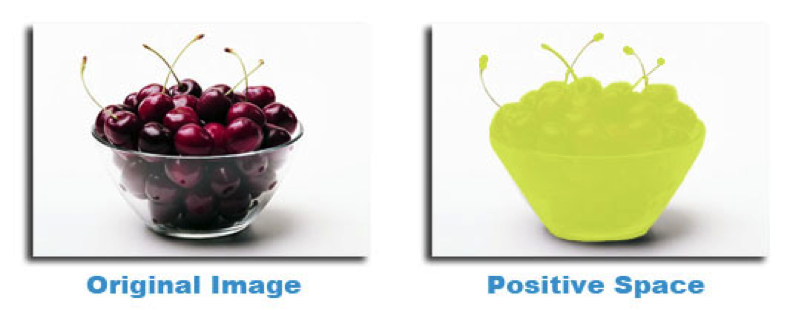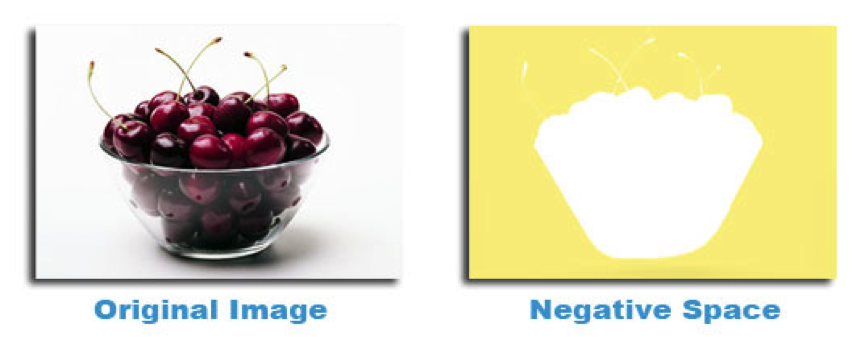Elements of Design
Session 1: Elements of Design
Space
|
Space is the area provided for a particular purpose. It may have two dimensions (length and width), such as a computer screen, or it may have three dimensions (length, width, and height) like a TV Studio. Space includes the background, foreground and middle ground. Space refers to the distances or areas around, between or within components of a piece. There are two type of space: positive and negative space. Positive space refers to the space of a shape representing the subject matter. Negative space refers to the space around and between the subject matter. Space in a two-dimensional drawing or graphic refers to the arrangement of objects on the picture plane. The picture plane is the surface of your medium, be it paper, canvas or screen for example. You can have a picture plane that is a crowded space with lots of objects or an empty space with very few objects in the picture plane. A two-dimensional poster has heights and width but no depth. The illusion of depth can be achieved by using perspective. This is the technique used to have your image look likes it is moving to the distance like a landscape or cityscape. Categories of SpacePositive Space
Simply put, positive space is best described as the areas in a work of art that are the subjects, or areas of interest. In an image positive shapes are the solid forms in a design such as a bowl of cherries. In this example it is shown by green shape over the bowl of cherries. Negative Space:
Negative space is area around the subjects, or areas of interest. In an image the negative space is the area around the positive shape. Shown below by the yellow area around the bowl of cherries. Check out this short video, which looks at the idea of positive and negative space: Picture Plane
Is the flat surface of where the image will be displayed it could be your monitor, drawing paper, canvas, TV, etc... CompositionIs the organization and placement of the elements on your picture plane. Focal Point
Is the object or area you want the viewer to look at first. This is always important in making sure you are giving the right element the most attention. The relationship between a figure in the background is a fundamental association of a positive and negative or shape versus space. But in a curious way, space around figures has shape to. To orchestrate a harmonic balance of the parts of the design, it is critical to achieve a sense of the relationship between the shapes of the design and the configuration of the space around the shapes. Experienced designers know the importance of paying equal attention to the shape of the figures in the shape of the surrounding space or background. |
|
While no one but you may see this hands on exercise, take the time to do it just as if you were turning it in for a grade. It will help reinforce what you have learned.
|






 Try This
Try This
